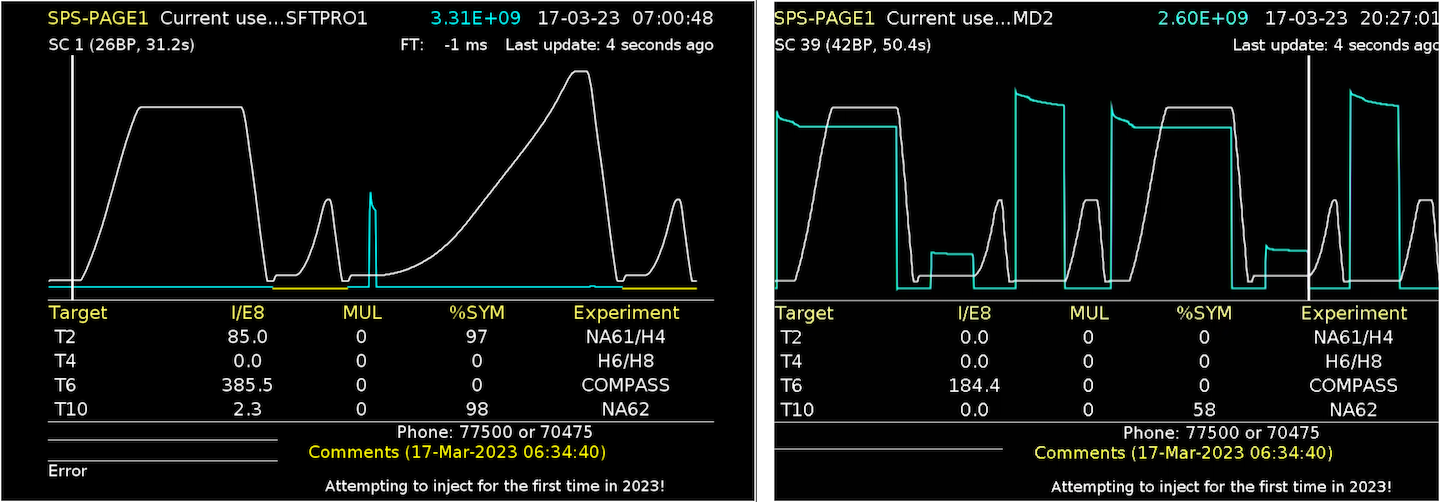Last week, the SPS accelerated its first beam of the year. In the early hours of Friday, 17 March, the PS sent the "LHC individual bunch beam" (LHCindiv) down the TT2/TT10 transfer lines to the SPS door. After clearing some interlocks, the beam was quickly injected into the accelerator. For the SPS operators, the machine physicists and the equipment experts, the meticulous process of adjusting the thousands of machine parameters then began, with countless iterations between observations on the beam and fine-tuning of the parameters. At 8 o'clock in the evening, the day ended with satisfaction after the beam was injected and accelerated on many different cycles.
The SPS operations team continued to work over the weekend, making particle orbit measurements around the SPS and determining whether improvements could or needed to be made. This is done through a "beam-based realignment campaign": the particle orbits in the horizontal and vertical planes are measured for two types of beam, namely the LHCindiv beam and a low intensity beam destined for fixed-target physics in the SPS North Area. This orbit data is carefully analysed and used to calculate whether mechanical displacement of some of the quadrupole magnets could improve the orbit, i.e. whether the excursion of the beam in the vacuum chamber can be reduced so that the particle beam can move more smoothly through the SPS vacuum chambers for the remainder of the year, minimising possible particle losses. This week, beam production will be briefly interrupted so that our colleagues working on transport and geodetic metrology can enter the SPS tunnel to move the selected magnets, sometimes by only a fraction of a millimetre. Immediately afterwards, the SPS operators will re-inject the beam and quantify and validate the orbit correction. From that moment onwards the fine adjustments to prepare the necessary beams will continue, in order to be ready to inject beams into the LHC next week.

On the LHC side, most of the maintenance activities have been completed, the machine has been closed and the Departmental Safety Officer, with support from the access and safety system team and the OP group, has validated the LHC access and safety system - a necessary condition for switching on the LHC and injecting beams. The hardware commissioning is progressing well and the power converters are being switched on and tested gradually. The objective is to be ready to inject the first beam of 2023 into the LHC next week.






